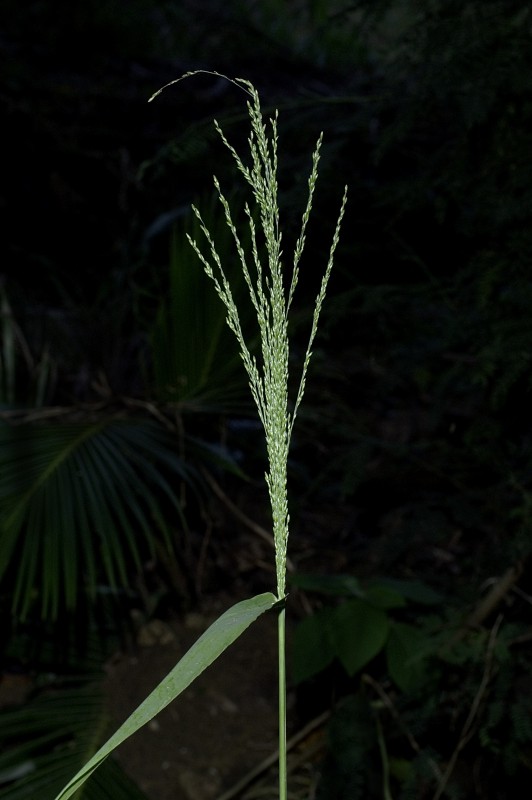
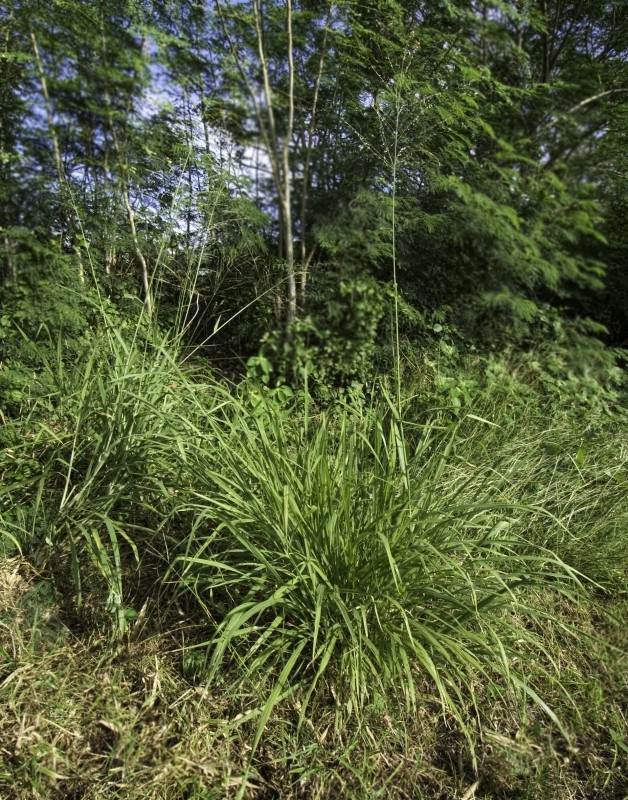
Panicum is a very common group of edible native and non-native grasses in Florida and North America. If you can’t figure out which species you have don’t be discouraged. There are 16 different main species and if you add sub-species and varieties they number about 90 (and often different microscopically.) Like most grasses one can eat the grains and the blades. Usually the blades are dried, powered and used to thicken soups. They can also be used to add heft to meat loafs or bread and increase the satiation factor. While the grain of Panic Grass can be eaten raw it benefits greatly by being cooked, usually parched in a hot pan or slightly roasted. You can also boil it like a porridge. I think the most commonly recognized non-native edible Panic Grass is “Guineagrass.” It was introduced into Louisiana in 1813.
(As an aside it’s important to remember there are no toxic native North American grasses. It’s the non-natives grasses that can be toxic and usually from small amounts of cyanide. It doesn’t take a lot of cyanide to make you sick but preparation can drive it off. So beyond identification the next question regarding any grass is whether it is a native or not.)
To read more about Panic Grass go here.

The aroma of a wild food is the most flexible of all descriptions. This is for two reasons: Noses differ and plants differ. Taste is also quite flexible but aroma beats it out. When you read in a foraging guide, or even in my articles, that a plant or mushroom smells like such-and-such know that the description is quite subjective. There are several local species that elicit different descriptions even when noses are whiffing the same sample. One low-growing fruit — the Gopher Apple — has been described as smelling like pink bubble gum, a new plastic shower curtain, or no aroma at all. The smelly spice Epazote ranges in opinions from citrusy to floor varnish to industrial cleaner. Even among non-edibles the olfactory estimations can vary such as with the toxic Laurel Cherry. Some think its cyanide smells like almonds, other think they smell maraschino cherries, some can’t smell the cyanide at all. In guide books a reported aroma is just that, a guide. It is not always for certain by any means. There’s room for aromatic latitude.
Plant Pronunciations: What’s really important is knowing the plant, and whether you can eat it or not. What you call it is secondary to that. Common names are okay as long as you know many plants can have the same common name. “Indian Potato” comes to mind. There are two problems with common names. You and someone may be talking about an “Indian Potato” but actually be discussing two different species. Also every plant — in theory — has one botanical name but can have virtually dozens of common names. Many times it is just easier to remember the one botanical name than numerous common names for the same plant.
Dead Latin was chosen for the scientific naming plants because … well… it’s dead, non-changing, non-evolving. Perhaps it was also chosen by academics as a way to keep Latin from disappearing completely and to exclude folks. But know even when Latin was spoken it had regional accents. Far flung Latin became French, Spanish and Romanian. At home it became Italian. There is no etched-in-granite correct way to pronounce botanical names. And of course there are different pronunciations of botanical names between American and British English such as with the pine genus (PINE-us, vs. PEEN-iss.)
As a student of Greek I choose to pronounce some “Latin” botanical names the Greek way because Dead Latin is half bastardized Greek and half bastardized Etruscan. Take the genus Dioscorea, the true yams. Dead Latin has it dye-oh-SCORE-ree-ah. It is named after a Greek physician Dioscorides, 40-90 AD. So I prefer thee-oh-score-REE-ah, closer to the Greek way of saying it. The only time the botanical name is truly important is, like above, to make sure the two of you are talking about the same plant. This happened recently when I got an email from Singapore about how to use the Skunk Vine. There are several Skunk Vines. As we were exchanging information about Paederia foetida without the botanical name that exchange would have been difficult. And sorry folks but a lot of mushrooms don’t have common names. You just have to bite the fugal bullet and remember Dead Latin.

Cooler nights means cooler days and less humidity. I am heading north and south this weekend, 300 miles apart: Jacksonville Saturday, Port Charlotte Sunday, both fine locations for foraging.
Saturday, September 28th, Florida State College, south campus, 11901 Beach Blvd., Jacksonville, 32246. 9 a.m. to noon. We will meet at building “D” next to the administration parking lot.
Sunday, September 29th, Bayshore Live Oak Park, Bayshore Drive. Port Charlotte. 9 a.m. to noon. Meet at the parking lot at the intersection of Bayshore Road and Ganyard Street. 9 a.m. to noon.
Saturday, October 5th, Spruce Creek Park, 6250 Ridgewood Ave. Port Orange, 32127. 9 a.m. to noon. Meet at the pavilion.
Sunday, October 6th, Dreher Park, 1200 Southern Blvd., West Palm Beach, 33405. 9 a.m. to noon. Meet in the parking lot just north of the science center.
Saturday October 12th, Blanchard Park, 10501 Jay Blanchard Trail, Orlando, FL 32817. 9 a.m. to noon. Meet next to the tennis courts by the YMCA building.
Sunday, October 13th, Red Bug Slough Preserve, 5200 Beneva Road, Sarasota, FL, 34233. 9 a.m to noon. Meet at the swings.
For more information about the classes, to sign up or pre-pay go here.
One of the most common “weeds” purslane is also among the most nutritious. It’s not native to North America — India actually — which might explain why Americans are about the only population on earth that don’t eat it regularly. It Greece it is one of several wild green collectively called “horta” though purslane itself is called Glistrida, glis-STREE-dah. It’s served in a wide variety of ways from a little olive oil and salt to more elaborate dressings. Here’s how the Cretans like to serve it, croutons optional:
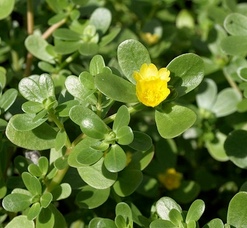
1 large red ripe tomato, cored and sliced into wedges or diced
1/2 medium or 1 small cucumber, peeled, and sliced, seeding optional
1/2 a small onion, very thinly sliced
Feta cheese (as much as you like to eat in a salad)
5 or 6 stalks of purslane, rinsed then chopped (use all but the thickest stems. They are better picked.)
A couple of sprigs of basil
Kalamata olives
Salt to taste
Mild vinegar
Good olive oil
A sprinkle of oregano
Combine tomato, cucumber, onion, feta, purslane, basil leaves, olives, toss to combine. Sprinkle with a pinch of salt or to taste. Add a few drops of vinegar, top with olive oil. sprinkle with dried oregano. In the wild pick only purslane with simple, small yellow blossoms. To read more about purslane click here.
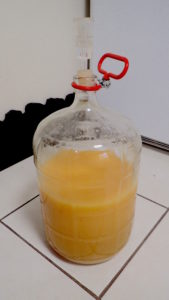
The Pindo Palm wine was wonderful. I’ve been making wine and beer for over 30 years. My best was watermelon wine: It came out like a fine Rhine Wine. The worst we won’t discuss. Here you see the Pindo fruit wine just before I racked it the second time and added 24 ounces of organic brown sugar. While the yeast one uses can make a significant difference sugar choices can as well. They can “throw” flavors. Table sugar (sucrose and fructose) is not a good sugar for making beer because it tends to throw a wine-ish flavor. However it’s good for making cider. Corn sugar (dextrose) is preferred for beer in that it does not throw a flavor, or if it does as some argue, it compliments beer. Brown sugar, which is part fructose, has a hint of molasses. As the Pindo Palm fruit is on the fruity wild side brown sugar fits into the flavor profile well. Agave sugar would have work, too. Pindo Palm wine clears poorly and will never have the clarity of a grape wine. There’s too much pectin in the juice (even with a pectin enzyme added to reduce it.) The wine will always be a bit cloudy… but after 14 glasses one does not notice.

Donations: I had a $100 donation this past week. Thank you very much. If anyone would like to donate to this website and newsletter they can use this Go Fund Me link, this PayPal donation link or by writing to Green Deane POB 941793 Maitland FL, 32794. And I am in the process of writing to folks who are interested in exchanging some webmastering for foraging classes. As they used to say when we had television with antennas, stay tuned.
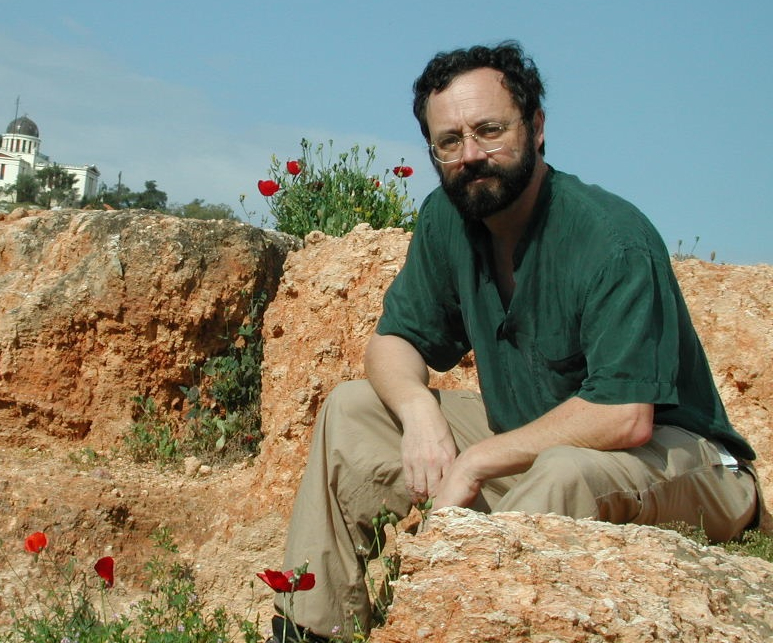
All My Videos are available for free on You Tube. They do have ads on them so every time you watch a Green Deane video I get a quarter of one cent. Four views, one cent. Not exactly a large money-maker but it helps pays for this newsletter. If you want to see the videos without ads and some in slightly better quality you can order the DVD set. It is nine DVDs with 15 videos on each for a total of 135 videos. Many people want their own copy of the videos or they have a slow service and its easier to order then to watch them on-line. The DVDs make a good gift for that forager you know especially as spring is … springing. Individual DVDs can also be ordered or you can pick and choose. You can order them by clicking on the button on the top right hand side of this page (if your window is open wide enough.) Or you can go here.
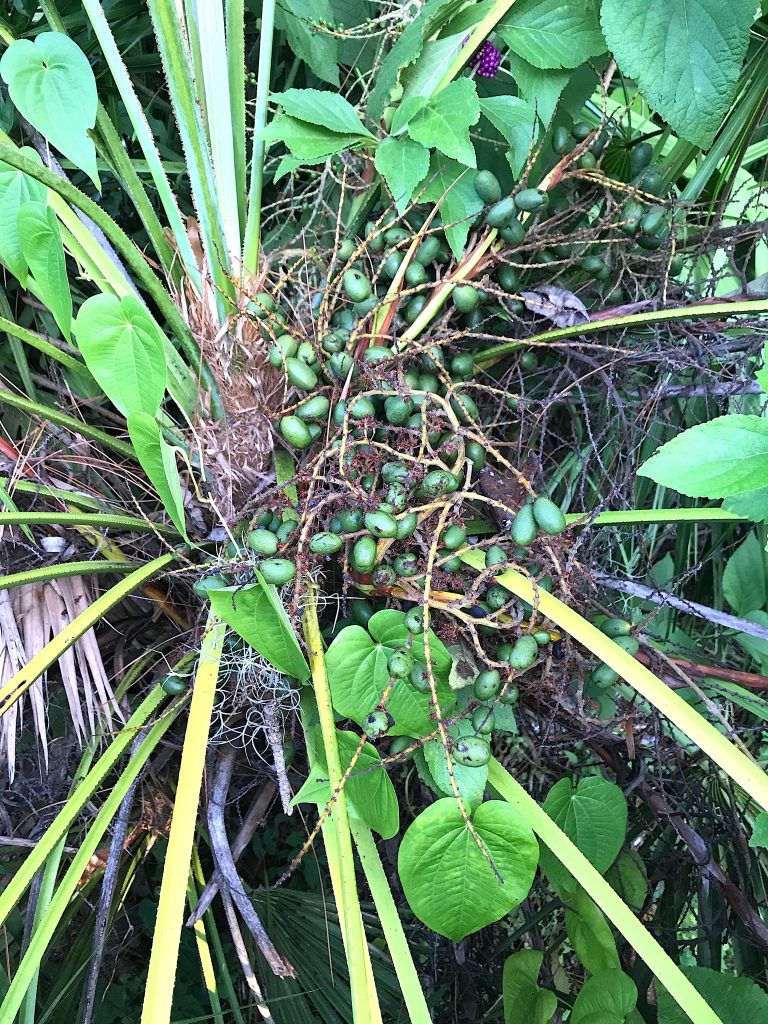
Want to identify a plant? Perhaps you’re looking for a foraging reference? You might have a UFO, an Unidentified Flowering Object you want identified. On the Green Deane Forum we — including Green Deane and some 8,000 others from around the world — chat about foraging all year. And it’s not just about warm-weather plants or just North American flora. Many nations share common weeds so there’s a lot to talk about. There’s also more than weeds. The reference section has information for foraging around the world. There are also articles on food preservation, and forgotten skills from making bows to fermenting food.
This is weekly newsletter 374. If you want to subscribe to this free newsletter you can find the sign-up form in the menu at the top of the page. And… I am having a difficult time with Word Press getting the photos to place where I want them. Ads seem to be forcing them out of position. If anyone knows a solution please let me know.




Love your stuff! If you would write a book, I would pay a great deal if money for it. It would pretty much be the absolute pinnacle reference for foraging in the southeast!